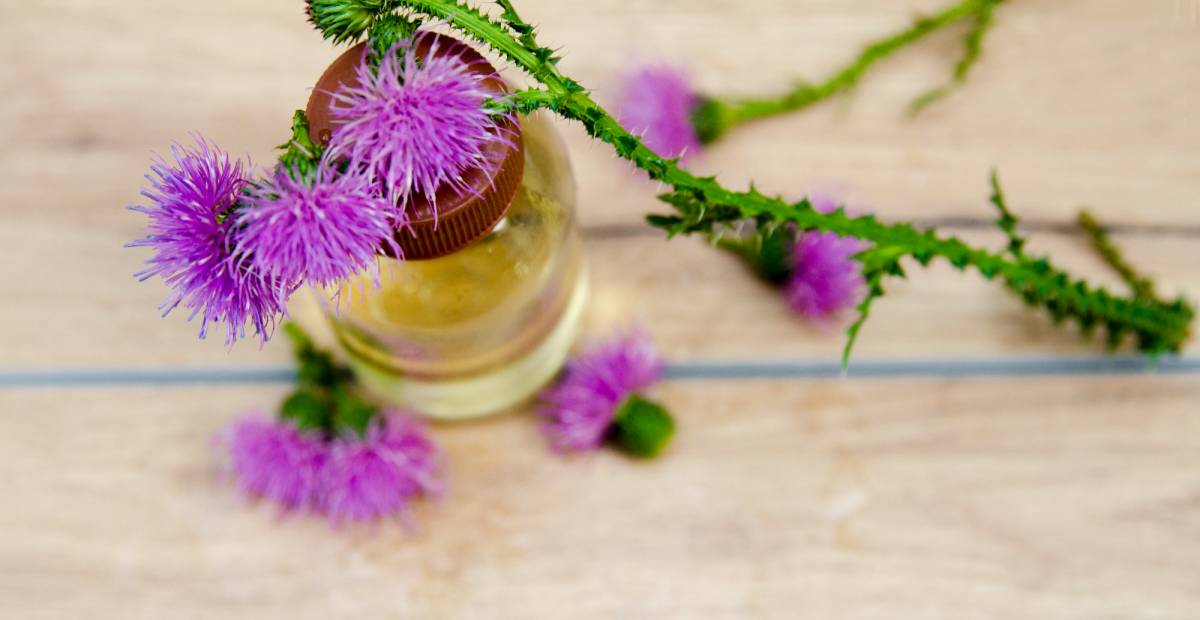Combining Milk Thistle & Broccoli Extract: Synergistic Effects for a Complete Liver Support Stac

Combining milk thistle extract—a rich source of silymarin—with broccoli sprout extract, standardized for sulforaphane, may enhance the liver’s detoxification capacity. Individuals exploring broccoli sprout extract benefits or wondering “is broccoli good for liver support?” often seek combinations that go beyond single-ingredient formulas. Emerging research suggests this pairing can activate complementary Phase-II detoxification enzymes, boost antioxidant defense, and protect hepatocytes from oxidative insults. This article explores the underlying mechanisms of synergy, evaluates supporting evidence, and outlines how to create an evidence-informed liver support stack using these two botanicals.
Broccoli-Derived Phytochemicals for Liver Detoxification & Antioxidant Defense
Why Combine Milk Thistle and Broccoli Sprout Extract?
Milk thistle (Silybum marianum) and broccoli sprout extract (Brassica oleracea var. italica) contain bioactive compounds with distinct yet complementary effects on liver function and detoxification pathways. Milk thistle extract, standardised for silymarin, has demonstrated hepatoprotective properties by stabilising hepatocyte membranes, enhancing glutathione content, and reducing hepatic inflammation through modulation of NF-κB and TGF-β signaling [1].
In contrast, broccoli sprout extract, rich in sulforaphane, activates the Nrf2 pathway. This transcription factor upregulates Phase II detoxification enzymes, including glutathione S-transferases (GSTs) and UDP-glucuronosyltransferases (UGTs), facilitating the neutralisation and excretion of reactive metabolites and environmental toxins [2].
When combined, these two botanicals support both structural liver protection (via silymarin) and biochemical detoxification (via sulforaphane). The result is a comprehensive liver support stack that addresses oxidative stress, enhances cellular resilience, and promotes conjugation of xenobiotics.
This functional synergy is especially relevant for individuals exposed to chronic low-level toxins, including medication metabolites, alcohol by-products, and pollutants. It also aligns with growing interest in botanical strategies to support non-alcoholic fatty liver disease (NAFLD) and other metabolic liver challenges.
Learn more in Broccoli Sprouts for Non-Alcoholic Fatty Liver Disease (NAFLD): Current Evidence
Mechanisms of Synergy — From Nrf2 Activation to Bile Flow Regulation
The therapeutic potential of combining broccoli sprout extract with milk thistle extract lies in their complementary molecular pathways. While both promote liver resilience, they do so via distinct cellular mechanisms that together enhance Phase-II detoxification, antioxidant response, and biliary function.
Sulforaphane, the principal compound in broccoli sprouts, is a potent activator of the Nrf2–Keap1–ARE pathway. When Nrf2 translocates to the nucleus, it binds to antioxidant response elements (AREs), upregulating genes involved in the synthesis of detoxification enzymes such as glutathione S-transferases (GSTs) and UDP-glucuronosyltransferases (UGTs). This supports the conjugation and clearance of both endogenous and exogenous toxins [1].
In parallel, silymarin, a complex of flavonolignans from milk thistle, enhances glutathione regeneration, stabilises hepatocyte membranes, and increases bile production. Bile excretion is a critical final step in detoxification, especially for fat-soluble waste products and glucuronidated compounds induced by sulforaphane activity [2].
Moreover, silymarin exhibits inhibitory effects on lipid peroxidation and modulates inflammatory mediators such as TNF-α, complementing sulforaphane’s effect on NF-κB inhibition. This convergence reduces oxidative stress and prevents the inflammatory cascade associated with liver damage.
These coordinated actions support not only general hepatic function but also the clinical goals of metabolic detoxification protocols. This mechanistic complementarity may offer particular benefit in chronic exposure scenarios—such as persistent pollutant burden or medication-induced liver strain.
Further reading: How Sulforaphane Activates Nrf2 & Phase-II Detox Enzymes
What Does the Science Say? Human & Pre-Clinical Evidence
The combined use of milk thistle extract and broccoli sprout extract has not been widely studied in tandem. However, independent research on each reveals mechanisms of action that suggest a potential for functional synergy. Several trials have investigated these compounds separately in the context of liver detoxification, oxidative stress, and inflammatory modulation—offering insight into their possible combined efficacy.
A double-blind, placebo-controlled trial published in Phytotherapy Research (2017) demonstrated that supplementation with silymarin significantly reduced liver enzyme levels (ALT, AST) and improved histological markers in patients with non-alcoholic fatty liver disease (NAFLD) over a 12-week period [1]. Improvements were attributed to enhanced glutathione synthesis and reduced lipid peroxidation in hepatocytes.
Separately, a clinical trial in Cancer Prevention Research (2011) found that broccoli sprout extract, standardized for sulforaphane, significantly upregulated detoxification enzymes, including glutathione S-transferase (GST), in human liver tissue. Participants who consumed sulforaphane-rich preparations also demonstrated enhanced urinary excretion of benzene and acrolein conjugates, suggesting increased phase-II detoxification capacity [2].
Animal studies provide additional evidence. In murine models, sulforaphane and silymarin independently reduced hepatic steatosis and inflammation when administered during high-fat diet exposure. While direct head-to-head or combination trials are limited, the mechanistic complementarity is consistent across pre-clinical literature.
Given their distinct but overlapping biochemical roles—Nrf2 pathway activation, glutathione recycling, and membrane protection—the co-administration of these extracts is a scientifically plausible strategy for liver support. It also aligns with emerging trends in multi-compound formulations for broccoli-based liver detox protocols.
Broccoli Sprouts for Non-Alcoholic Fatty Liver Disease (NAFLD): Current Evidence
Building Your Liver Support Stack with Milk Thistle & Broccoli Extract
Creating a synergistic liver support stack with milk thistle extract and broccoli sprout extract requires careful attention to dosage, formulation quality, and timing. The goal is to optimise the complementary actions of silymarin and sulforaphane—two compounds that work through separate but converging detoxification pathways.
Choosing the Right Broccoli Extract Supplement
Effective liver support depends on selecting a broccoli sprout extract that delivers a clinically relevant amount of sulforaphane. Look for products that are standardised for sulforaphane yield or include active myrosinase, the enzyme required to convert glucoraphanin into sulforaphane. A 2022 analysis in Molecules confirmed that supplements lacking myrosinase showed significantly reduced bioavailability, limiting their impact on Phase-II enzyme activation [1].
Further Reading: Broccoli Sprout Supplements vs Fresh Sprouts: Potency, Bioavailability & Cost
Selecting a High-Potency Milk Thistle Extract
For milk thistle extract, prioritise formulations containing at least 70–80% silymarin, ideally with standardisation to silibinin—its most bioactive isomer. According to the European Medicines Agency, this concentration is essential to achieve therapeutic levels of hepatoprotection, especially for oxidative stress and bile regulation [2].
Suggested Daily Dosage & Timing
-
Sulforaphane (from broccoli extract): 30–60 mg per day
-
Silymarin (from milk thistle): 200–400 mg per day (divided doses preferred)
Both should be taken with meals containing healthy fats to enhance absorption.
Timing sulforaphane in the morning may help align with circadian detoxification cycles, while split dosing of silymarin offers more stable plasma concentrations.
Learn more in Optimal Dosage & Timing for Broccoli Sprout Extract
Anchor text: “optimal dosage and timing for broccoli sprout extract”
Stack Enhancers — Sleep, Fibre & Hydration
Botanical stacks work best when integrated with detox-supportive habits.
-
Fibre intake facilitates bile excretion and conjugate removal.
-
Hydration assists in renal elimination of glucuronidated toxins.
-
Sleep hygiene supports nighttime glutathione cycling and hepatic repair.
Safety, Side Effects & Drug Interactions
Milk thistle extract and broccoli sprout extract are generally considered safe when used within standardised dosages. However, due to their bioactive nature, both compounds can interact with metabolic pathways and medications, particularly in individuals with pre-existing conditions or those on chronic pharmacotherapy.
Safety Profile of Milk Thistle (Silymarin)
According to the European Medicines Agency and the National Center for Complementary and Integrative Health (NCCIH), silymarin is well-tolerated in doses up to 600 mg/day in healthy adults [1]. Mild gastrointestinal symptoms such as nausea, bloating, or diarrhoea have been reported in a minority of users. Allergic reactions are rare but may occur in individuals sensitive to plants in the Asteraceae family.
Silymarin may inhibit cytochrome P450 isoenzymes, particularly CYP3A4, potentially altering the metabolism of medications such as statins, oral contraceptives, and antivirals. Clinical supervision is advised when co-administering with drugs that have a narrow therapeutic window.
Side Effects and Precautions for Broccoli Extract
Standardised broccoli sprout extract, when titrated for sulforaphane, is also well-tolerated in both short-term and multi-week human studies. The most common side effects reported include mild gastrointestinal discomfort, especially at higher doses (≥100 µmol/day) [2].
Due to sulforaphane’s modulation of phase I and II detoxification enzymes, it may alter the biotransformation of certain medications. Sulforaphane is also a known CYP1A2 inducer, potentially lowering plasma levels of drugs like clozapine or theophylline. Individuals on such medications should consult a healthcare provider before starting broccoli-based liver detox supplements.
Related content: Safety, Side Effects & Drug Interactions of Sulforaphane
Special Populations
-
Pregnancy and lactation: There is insufficient clinical data to recommend the combined use of milk thistle and broccoli extract during pregnancy or breastfeeding.
-
Children: Use in paediatric populations has not been sufficiently studied and should be avoided unless supervised by a clinician.
-
Liver impairment: While both ingredients support liver health, dosage must be carefully adjusted in patients with hepatic insufficiency.
Frequently Asked Questions — Milk Thistle & Broccoli Extract Combination
Is broccoli good for liver health?
Yes. Broccoli sprout extract contains sulforaphane, a compound that activates the Nrf2 pathway and increases the activity of Phase-II detoxification enzymes, including glutathione S-transferase (GST) and UDP-glucuronosyltransferase (UGT). These enzymes help neutralise and eliminate reactive metabolites and xenobiotics from the liver [1].
Learn more in Broccoli-Derived Phytochemicals for Liver Detoxification & Antioxidant Defense
What are the benefits of combining milk thistle and broccoli extract?
Milk thistle extract, rich in silymarin, stabilises liver cell membranes, enhances glutathione synthesis, and supports bile flow, while sulforaphane from broccoli extract promotes enzymatic detoxification and oxidative stress reduction. Together, they form a complementary liver support stack that targets multiple detox pathways simultaneously.
Can I take milk thistle and broccoli extract together daily?
Yes, both can be taken daily when used at standardised doses. Clinical studies have shown good tolerability of 200–400 mg silymarin and 30–60 mg sulforaphane daily. For optimal results, take with food to enhance absorption and reduce gastrointestinal discomfort.
Do broccoli detox supplements work better than fresh sprouts?
Standardised broccoli sprout supplements may offer more consistent sulforaphane yield compared to fresh sprouts, which vary in glucoraphanin and myrosinase content. Choose supplements that include active myrosinase to ensure bioavailability.
Related article: Broccoli Sprout Supplements vs Fresh Sprouts: Potency, Bioavailability & Cost
Are there any side effects or interactions with this combination?
Yes. Sulforaphane may induce CYP1A2, affecting medications such as clozapine and theophylline, while silymarin may inhibit CYP3A4, influencing drugs like statins and oral contraceptives. Individuals taking prescription medications should consult a healthcare professional prior to use.
In-depth discussion: Sulforaphane Side Effects & Drug Interactions
Can this combination support non-alcoholic fatty liver disease (NAFLD)?
Both ingredients have demonstrated potential in NAFLD models. Silymarin improves liver histology and enzyme profiles, while sulforaphane enhances detoxification and reduces lipid accumulation. Although human combination trials are limited, mechanistic data supports their use.
Further reading: Broccoli Sprouts for Non-Alcoholic Fatty Liver Disease (NAFLD): Current Evidence
Conclusion — A Functional Synergy Worth Considering
Combining milk thistle extract and broccoli sprout extract offers a comprehensive strategy for liver detoxification and cellular protection. While silymarin from milk thistle stabilises hepatocyte membranes, supports bile secretion, and enhances glutathione synthesis, sulforaphane from broccoli extract activates Phase-II detoxification enzymes through the Nrf2 pathway.
Evidence from clinical and preclinical studies suggests that their mechanisms converge on reducing oxidative damage, supporting enzyme-mediated detoxification, and improving hepatic resilience. This combination aligns with evolving approaches to liver support stacks that prioritise multi-pathway synergy over single-agent interventions.
When properly formulated and dosed, this botanical pair may benefit individuals managing environmental toxin exposure, poor diet, metabolic dysfunction, or non-alcoholic fatty liver disease. However, users taking medications with known CYP450 interactions should consult a physician before initiating supplementation.
For those seeking an evidence-based, dual-pathway strategy to support liver health and detoxification, the milk thistle–broccoli extract combination is scientifically credible and mechanistically justified.
